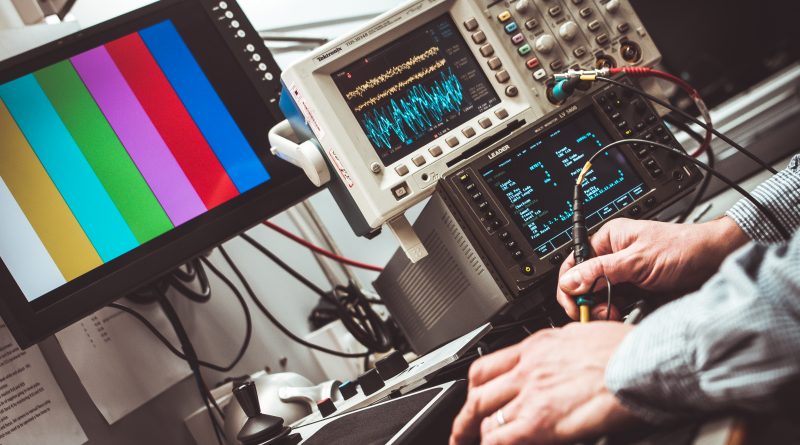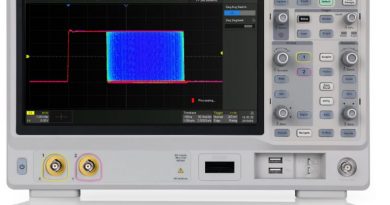Taking Measurements with an Oscilloscope
A technician taking measurements with an Oscilloscop for a repair job. Furthermore, an automotive engineer uses an oscilloscope to correlate analog data from sensors with serial data from the engine control unit. Computer engineers use oscilloscopes to measure the consumption of microchips.
What is an oscilloscope?
A digital storage oscilloscope is an electronic device used to view electrical signals. It consists of a display screen, inputs, and several controls, mainly used for taking measurements.
Basic operation
For taking measurements with an oscilloscope, you first plug the electrical signal you’d like to view into one of the oscilloscope’s inputs of which there are typically two, labeled A and B.
Noted: when you first switch on the oscilloscope, the signal won’t be visible until you adjust two settings: volts/division and time/division (or timebase).
1. To measure the vertical scale, the volts/division determines the number of volts for each vertical division.
2. The time/division controls the horizontal scale. The amount of time each horizontal division shows is commensurately changed when you adjust the time/division.
Adjust these two settings until the signal is clearly displayed on the oscilloscope’s screen. For more detail on how to operate the oscilloscope, you can read this article by the University of Nebraska.

AC Amplitude
For taking measurements with an Oscilloscope for the alternating current (AC) amplitude you start by plugging the AC signal into one of the oscilloscope’s inputs before optimizing the signal. The AC signal will oscillate and resemble a sine wave. You’ll measure the signal’s amplitude by counting the number of vertical divisions between the signal’s highest and lowest points (i.e. its peak and trough). You can get the amplitude in volts by multiplying the number of vertical divisions by your volts/division setting.
AC Frequency
If you’d like to measure the alternating current frequency you should plug the AC signal into one of the inputs on your digital oscilloscope and optimize the signal. Count the number of horizontal divisions from one high point to the next (i.e. peak to peak) of your oscillating signal. Next, you’ll multiply the number of horizontal divisions by the time/division to find the signal’s period. You can calculate the signal’s frequency with this equation: frequency=1/period.
DC Signal Voltage
In order taking measurements with an Oscilloscope for a direct current (DC) signal’s voltage, you first turn on your oscilloscope without connecting the input signal. (Note that a DC signal will be flat on your oscilloscope’s display.) Place the oscilloscope line over the zero volt level with the vertical position setting. Then plug the DC signal path into one of your oscilloscope’s inputs. After plugging in the signal you will notice the oscilloscope line shift on the vertical axis. You’ll count the number of vertical divisions that your oscilloscope line shifts and multiply the vertical divisions by the volts/division to find the DC signal voltage.

